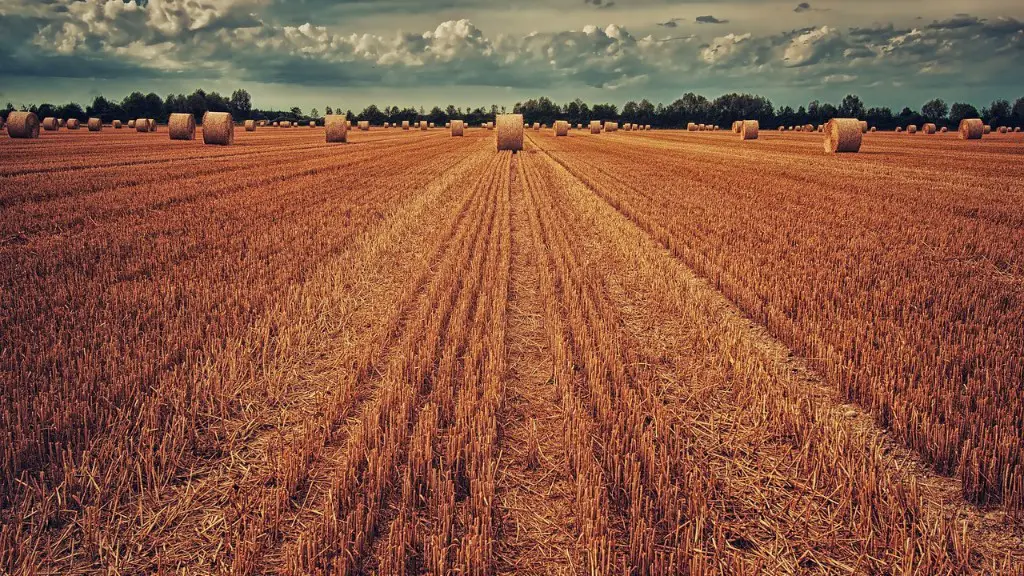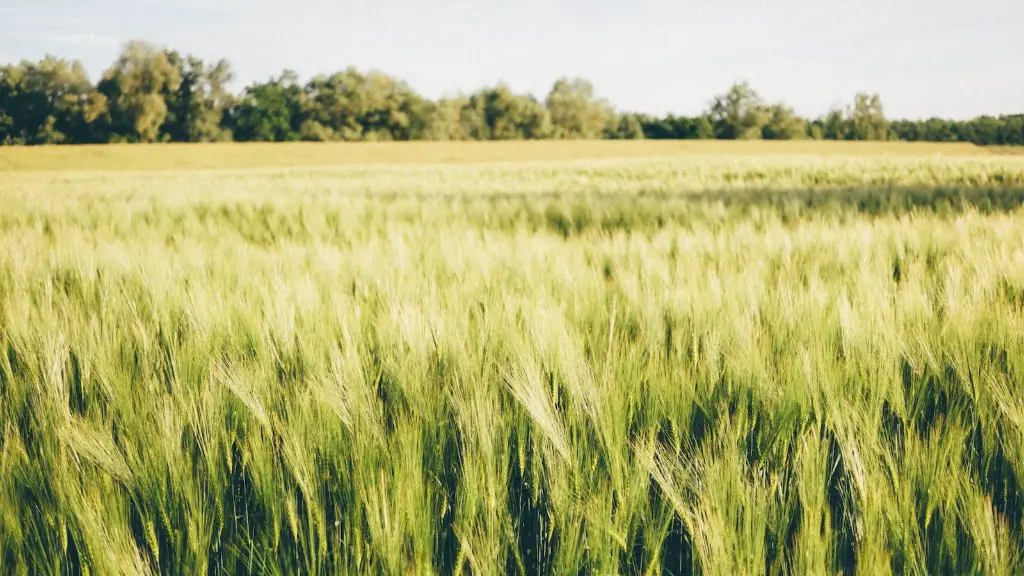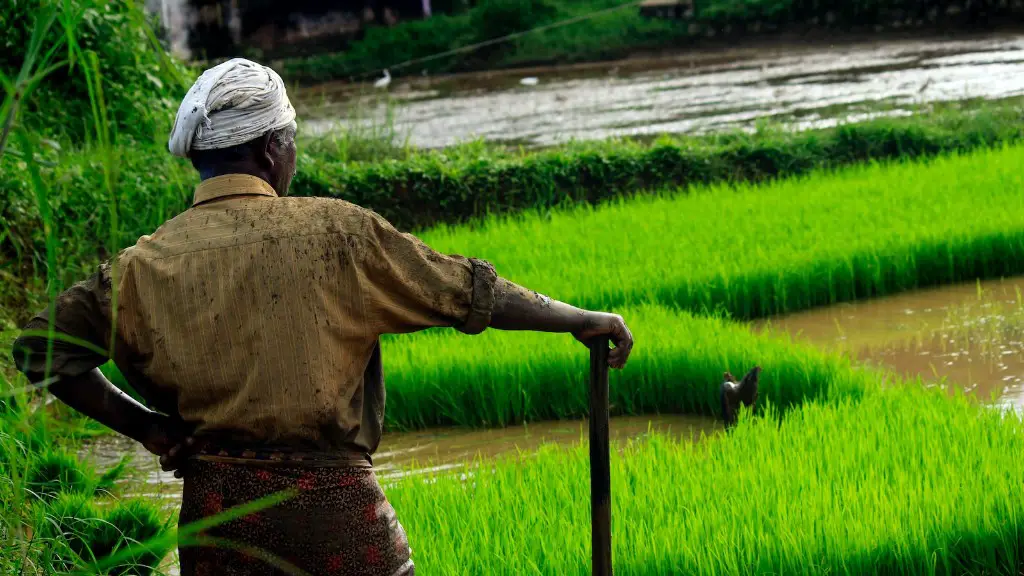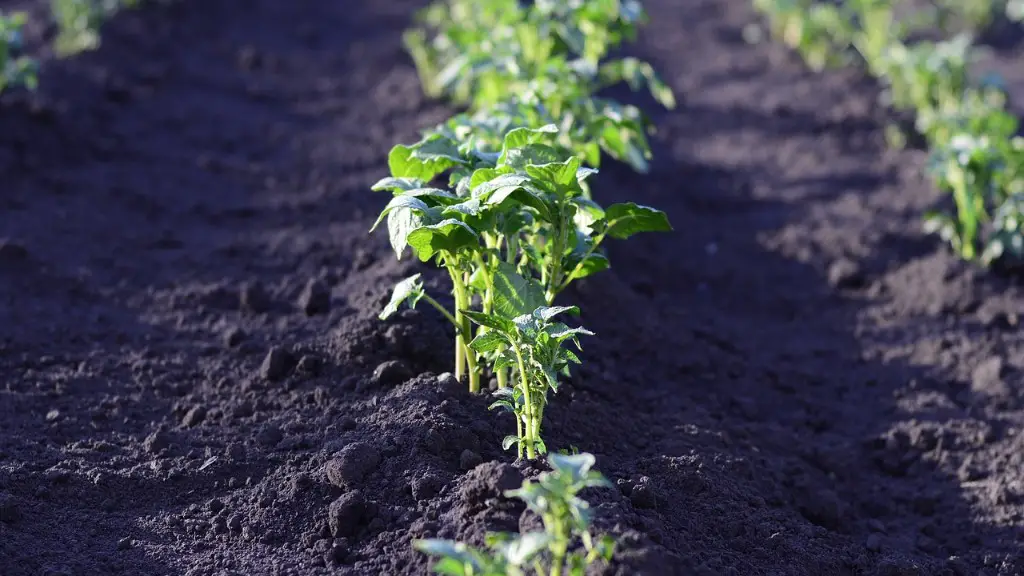California is the top agriculture-producing state in the United States. In 2018, California farming produced $47.3 billion in crops and livestock. That is nearly 15 percent of the nation’s total agriculture output. California produces more than 400 different commodities, far more than any other state.
The number of farms in California totaled 75,262 in 2012, down 3 percent from the previous census in 2007. These farms and ranches generated $36.2 billion in sales in 2012, up 9 percent from 2007. The top five commodities in terms of value were milk, almonds, grapes, cattle, and hay.
What percentage of agriculture comes from California?
Farms and ranches in California produce over 13 percent of the nation’s agricultural production value. This makes California one of the leading agricultural states in the country. There are many different types of agriculture in California, including cattle ranching, dairy farming, and crop production. California’s climate and soil are well-suited for agriculture, and the state’s farmers and ranchers take advantage of this by producing a wide variety of crops and livestock.
California’s agricultural sector is booming, with the state ranking first in the US for agricultural cash receipts. This is followed by Iowa, Texas, Nebraska and Illinois. The sector is a major contributor to the state’s economy, with California’s agricultural exports totaling $21.3 billion in 2016.
Which US state produces the most agriculture
The top 10 agriculture-producing States in terms of cash receipts in calendar year 2021 were (in descending order): California, Iowa, Nebraska, Texas, Minnesota, Illinois, Kansas, Indiana, North Carolina, and Wisconsin.
California is the leading producer of fruits and nuts in the United States, accounting for 46 percent of the nation’s production and 62 percent of the value of fruit and nut crops. The state’s diverse climate and geography allow for a wide range of fruit and nut crops to be grown, including almonds, pistachios, walnuts, grapes, oranges, and strawberries. California’s fruit and nut industry is a major contributor to the state’s economy, generating billions of dollars in revenue each year.
Does California produce the most food in the world?
California is the world’s fifth-largest supplier of food, cotton fiber, and other agricultural commodities. In the US, California is the largest producer of food despite having less than 4% of the farms in the country. California’s climate and soil are ideal for agriculture, and the state produces a wide variety of fruits, vegetables, nuts, and other crops. California is also a major producer of cotton, and the state’s cotton farms are some of the most productive in the world.
There are many reasons why California is America’s agricultural superstar, but the two main reasons are the state’s climate and considerable amount of arable land. Conditions in the Golden State are near-perfect for growing all sorts of delicious fruits and vegetables. And with such a large amount of arable land, farmers in California are able to produce an incredible amount of food.
What is California’s largest crop?
California is the top agricultural producing state in the US and is responsible for a large portion of the country’s dairy, grape, and almond output. Other top commodities include cattle and calves, strawberries, and lettuce. The state’s warm climate and varied terrain allow for the growth of a wide variety of crops.
California is a top agricultural producer in the United States and in the world. The state’s warm, dry climate and fertile soil support a wide variety of crops. California produces more than 400 different agricultural commodities, including wine, almonds, raisins, and cotton. The state’s agricultural industry provides jobs for over one million Californians and contributes billions of dollars to the economy.
What does California produce the most of
California is one of the leading mining states in the US, producing a wide variety of mined products. Oil is the main product, but the state also mines gold, silver, copper, and other minerals. The mining industry plays a vital role in the state’s economy, and the state is committed to supporting and promoting the industry.
Here is a top 10 list of agricultural producing states in 2022. These states have the highest agricultural receipts according to Farm Income and Wealth Statistics:
1. California
2. Iowa
3. Nebraska
4. Texas
5. Kansas
6. Minnesota
7. Illinois
8. Wisconsin
Some of the important differences between these states include the types of crops grown, the amount of land devoted to agriculture, and the climate. California, for example, is known for its wide variety of fruits and vegetables, while Iowa is a major producer of corn and soybeans. Texas has a large amount of farmland devoted to cattle ranching, while Kansas is a major producer of wheat. Minnesota is known for its dairy farms, and Illinois is a leading producer of pork. Wisconsin is known for its cranberry and ginseng farms.
Which US state has the highest percentage of farmland?
This is according to the latest data from the USDA. In 2021, Texas had nearly 25 million acres in farms, followed by Montana with just over 21 million acres, and Kansas with just over 20 million acres. Texas accounted for 14.4% of the land in farms in the United States, while Montana and Kansas accounted for 12.5% and 12.1%, respectively.
It is amazing that China, with only 10% of the world’s arable land, produces a quarter of the global grain output. China also leads the world in the production of fruit, vegetables, cotton, eggs, and poultry. This is a testament to the hard work and dedication of the Chinese people.
What is California’s biggest agricultural export
The United States is the largest producer of citrus in the world, supplying more than 80% of the fresh citrus fruits consumed in the country and exporting citrus to 16 countries around the world. California is the leading producer of citrus in the United States, supplying more than half of the fresh citrus fruits consumed in the country and exporting citrus to 12 countries around the world.
State of California is the leading producer of avocados, grapes, lemons, melons, peaches, plums, and strawberries. In the last ten years, California has produced almost 75% of the nation’s annual production of fruit and nuts. California’s climate and soil is ideal for growing these crops, and the state’s farmers have perfected the art of cultivation. As a result, California’s fruit and nut industry is one of the most prosperous in the country.
Who produces 70% of the world’s food?
The claim that family farms produce 70-80% of the world’s food is likely to be true. Small-scale farmers are the backbone of the food system, supplying the majority of the world’s food. In fact, family farms produce more than enough food to feed the world – if we could just get it to the people who need it.
California is the leading agricultural state in the United States, accounting for roughly 11% of agricultural cash receipts. The state is home to a diverse array of agriculture, including cattle and calves, poultry and eggs, dairy, fruit and nuts, and vegetables. California’s mild climate and ample water resources make it an ideal place for agriculture, and the state’s agriculture industry is a major contributor to the state’s economy.
Warp Up
According to the California Department of Agriculture, the state produces about $47.3 billion worth of agricultural products each year. This includes both crops and livestock.
It is estimated that California agriculture produces $47.5 billion in crops each year. This amount is expected to increase as the state continues to invest in agriculture and work to improve agricultural production.





